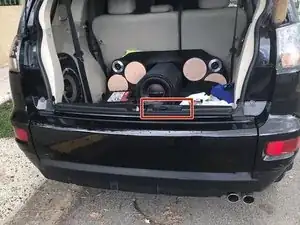
Bumper Taillight Bulb
Mitsubishi Motors Corporation (commonly referred to as Mitsubishi) is a Japanese multinational automotive manufacturer. It is a part of the Mitsubishi Group, a conglomerate of companies with diverse interests. Founded in 1970 as a result of a reorganization of the automotive division of Mitsubishi Heavy Industries, Mitsubishi Motors is primarily involved in the production and sales of automobiles, including sedans, hatchbacks, SUVs, electric vehicles (EVs), and commercial vehicles.
The history of Mitsubishi Motors dates back to 1917 when it produced its first mass-produced car, the Mitsubishi Model A. Since then, Mitsubishi Motors has evolved into one of Japan's leading automobile manufacturers and has established a global presence with manufacturing facilities and sales networks in various countries.
Previously a part of Mitsubishi Motors, the Mitsubishi Fuso Truck and Bus Corporation produces commercial-grade trucks, buses, and heavy construction equipment. However, it is now owned by Daimler AG, a German automotive corporation, and operates independently from Mitsubishi Motors.
Over the years, Mitsubishi Motors Corporation has faced notable challenges that have impacted its operations and reputation.
In 2000, Mitsubishi admitted to systematically hiding four defect problems in Mitsubishi-branded vehicles. In 2004, the company confessed to an additional 26 covered-up defects dating back to vehicles from the 1977 model year. These defects included fuel leaks, malfunctioning clutches, and failing brakes. As a result, Mitsubishi recalled 163,707 vehicles for free repair, including 7,274 outside of Japan and 156,433 in the Japanese market.
Mitsubishi Motors faced a major setback in 2016 when it admitted to manipulating fuel economy data for some of its models sold in Japan. The scandal involved overstating fuel efficiency figures, which led to a significant drop in consumer confidence and a decline in sales. The company's shares also experienced a sharp decline, and Mitsubishi Motors had to compensate customers and deal with legal consequences.
The fuel economy scandal, combined with declining sales in key markets, resulted in financial losses for Mitsubishi Motors. To address these difficulties, the company underwent a restructuring process, implementing cost-cutting measures, streamlining production, and exiting unprofitable markets. These efforts aimed to restore the company's reputation and regain market share.
In 2016, Mitsubishi Motors entered into a strategic alliance with Nissan Motor Co. and Renault S.A. as part of its efforts to stabilize and strengthen its operations. Nissan acquired a significant stake in Mitsubishi Motors, becoming its largest shareholder. This alliance aimed to leverage shared resources, technologies, and market presence to improve efficiency and competitiveness.
Identifying a Mitsubishi vehicle can be done by considering several key aspects, such as the model name, emblem, and specific design elements. Here are some steps to help you identify a Mitsubishi vehicle: